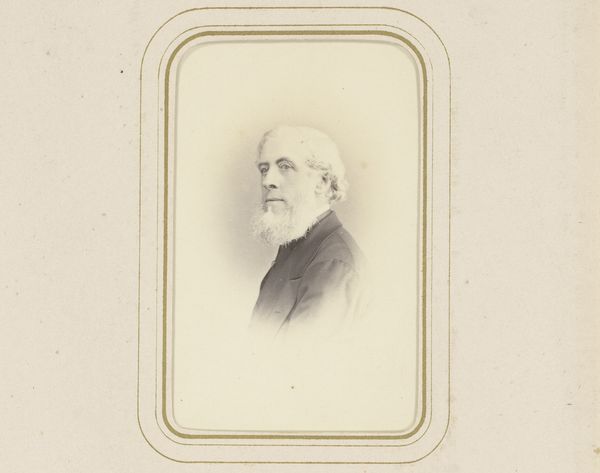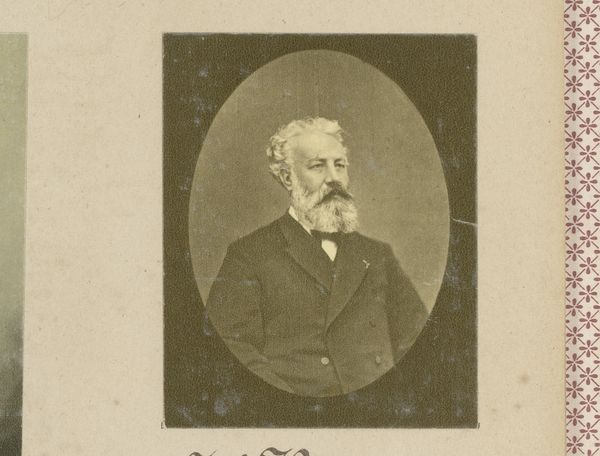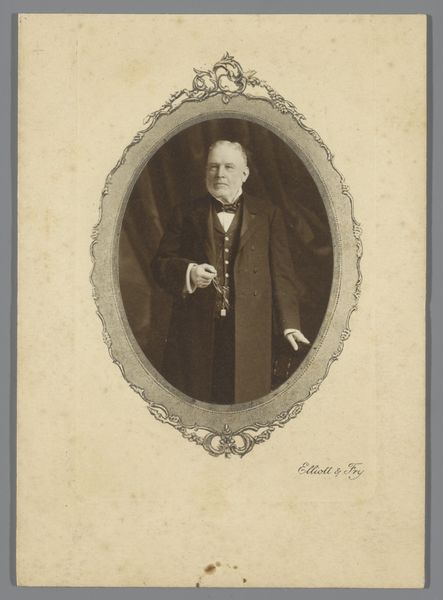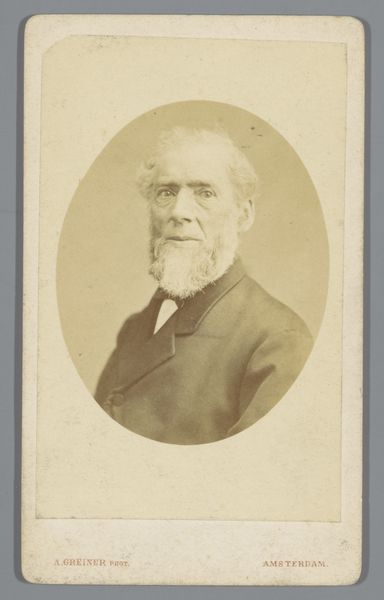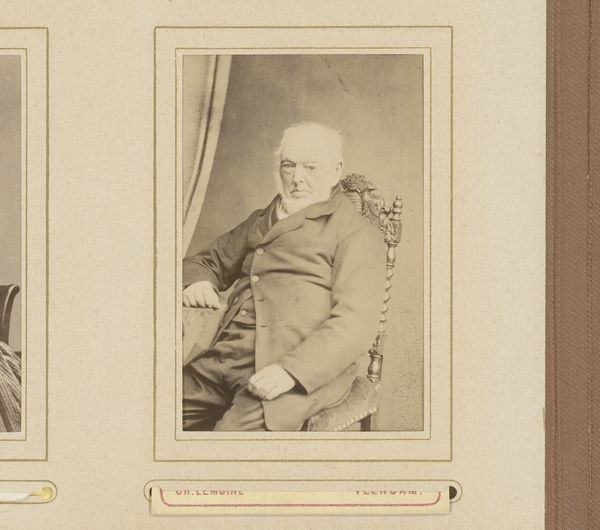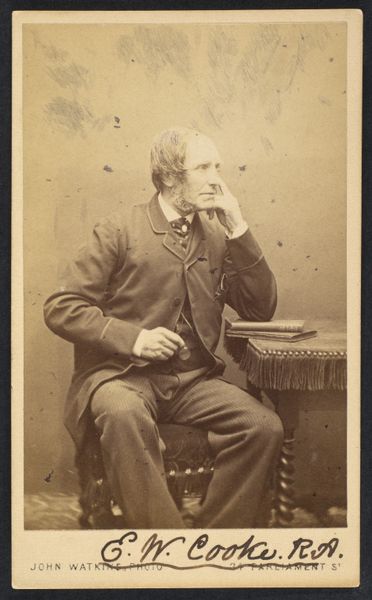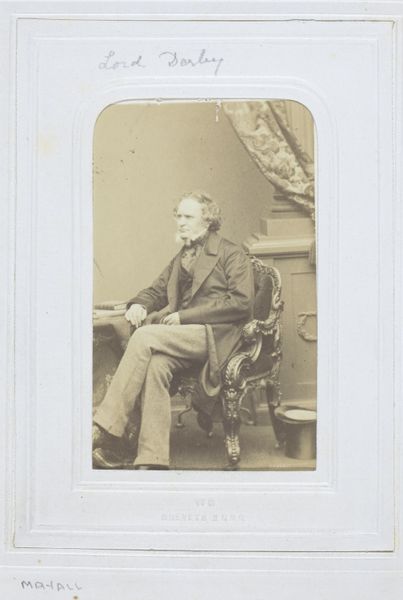
#
portrait
#
photo of handprinted image
#
aged paper
#
toned paper
#
photo restoration
#
old engraving style
#
personal sketchbook
#
coloured pencil
#
19th century
#
men
#
watercolour illustration
#
watercolor
Dimensions: Mount: 32.1 × 30.6 cm (12 5/8 × 12 1/16 in.) Image: 20.6 × 15.6 cm (8 1/8 × 6 1/8 in.), oval
Copyright: Public Domain
Editor: This is Mathew Brady’s 1869 portrait of Robert E. Lee, currently at the Met. The aged sepia tones give the image a melancholic feel. How do you interpret this work, especially considering the cultural weight it carries today? Curator: It’s fascinating how this image, like an icon, condenses complex narratives. Note the carefully controlled pose, the symbolic props on the desk. How do these elements contribute to a specific portrayal of Lee? Does it seem intended to evoke power, reflection, or something else entirely? Editor: It definitely feels like an attempt to portray him as a contemplative leader, maybe even regretful, but knowing what he represented makes it hard to see past that. Curator: Exactly. The weight of historical memory drastically alters the reception of such images. It once functioned perhaps as a memorial to a fallen commander. Now, it's a potent symbol of a deeply contested past. The meaning isn't fixed, but changes as the culture does. Think of it: an image intended to communicate one thing becomes a battleground for differing ideologies. Editor: So, the photograph's symbolism evolves over time, shaped by collective memory and evolving social values? Curator: Precisely. What do you think it might tell future generations, detached from our current debates? Editor: Maybe a cautionary tale about the dangers of glorifying figures from problematic histories. It’s definitely given me a lot to consider regarding the enduring power of images. Curator: And how the past is never truly past but always mediated through visual culture.
Comments
No comments
Be the first to comment and join the conversation on the ultimate creative platform.

